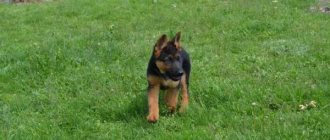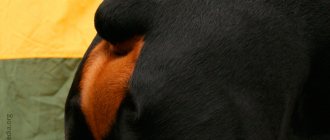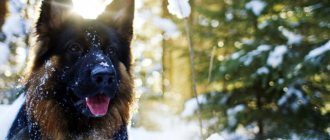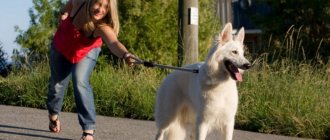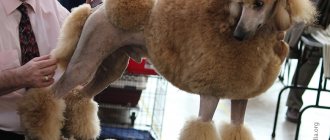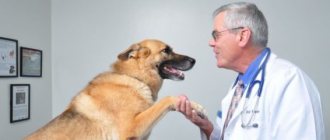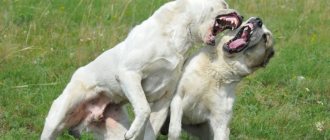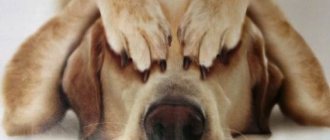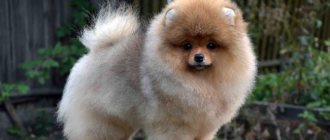Many owners don't want to limit themselves to just dog training. The tailed pet must move more, becoming strong, fast, resilient, and dexterous. By playing sports, the pet learns to make independent decisions; the sense of smell, hearing, and vision acquire the greatest sensitivity. By getting into good shape through sports, the dog becomes healthier and more energetic. If the owner decides to make his pet an athlete, then it is necessary to take training and obedience courses, consult with a veterinarian to identify contraindications and choose a sport in accordance with the physical form and breed of the pet. There are many types of competitions. With their help, you can develop the necessary qualities of the animal.
Agility
This is a new dynamic sport. The dog and the owner take part in it. The goal is to complete the course with obstacles with a minimum number of mistakes. The dog must complete the cross-country course without motivators (sweets and toys), obeying only commands. The dog should not have a collar or leash. The four-legged athlete must be over a year old. Competitions are held for three categories of dogs, depending on their size.
Many amateurs hold local competitions, in which even cats can participate. They themselves organize obstacles for their pets and invite guests to this show. Items such as a podium can be purchased using the TRIBUNY.RF information portal. And you can make sports structures yourself; many owners of four-legged animals have golden hands. These competitions may not be professional, but they will unite pet owners and help keep their pets in shape.
Cynological sports: what to do with your dog for mutual benefit
If your dog spends the whole day on the mat waiting for its owner and is content with only short walks, you should know that its life is boring and uninteresting. After an hour of a leisurely walk in the park, the pet is still full of energy and really doesn’t want to return home. Especially for mutual pleasure and common benefit, cynological sports were invented, the types of which are aimed at developing important qualities in the dog and wasting excess energy. This hobby will bring joy not only to you, but also to your pet!
- Classification of dog sports
- Agility - for speed lovers
- Frisbee - a sport for lovers of heights
- Obidience - for lovers of precision
Classification of dog sports
All types of dog sports can be divided into two areas:
- The dog works independently, with little or no human participation (hunting competitions, greyhound races, coursing, shepherd service, some protective standards, etc.).
- The dog works in close cooperation with the person (agility, frisbee, freestyle, obedience, etc.).
The types of the first direction were formed a long time ago - along with the appearance of the corresponding work. In these sports, success is achieved by the innate qualities of the dog and long training. Today we will talk about the sports of the second direction. All of them appeared quite recently, in the second half of the 20th century. Their advantage is that any healthy dog can become an athlete.
Agility - for speed lovers
Agility (from the English agility - dexterity) - this sport for dogs originated in the UK in 1978 at the largest exhibition Crufts. Initially, it was a demonstration performance with obstacles from equestrian sports. The essence of agility is to pass an obstacle course as quickly as possible without making mistakes.
Dog agility sport
Of course, the dog must do this; the owner (handler, handler) only points the dog to the projectiles. First, the handler must learn the route without the dog. Thus, the four-legged athlete does not know the order of the obstacles and relies only on the instructions of the owner.
What you need for agility
- The dog is in good physical shape. A well-fed, spoiled pet will first have to be put on a diet.
- You yourself need to be in shape to keep up with the dog. Try running alone first or prepare your body with fitness.
- Good memory and attentiveness to remember the order of passing the shells.
- An area with special agility equipment. This is perhaps the biggest drawback of this sport - it will not be possible to practice without obstacles.
- For training, take food for the animal (preferably the dog is hungry and wants to earn food), toys, water.
Agility equipment
Agility is a wonderful active holiday with a dog. One of the types of canine sports where both the dog and the owner are active. Its disadvantage is the mandatory presence of special projectiles, which means you will have to waste time on the way to the site.
Agility is suitable for all breeds
First, the animal needs to develop good contact with the handler. The dog is your partner. He should be interested in working with you.
Frisbee - a sport for lovers of heights
Frisbee (also frisbee, disc dog) is a game with a flying saucer (called disc in sports) - a popular beach entertainment for children and adults. In parallel with the “human” frisbee, the canine version also emerged. It all started during halftime at a baseball game in 1974, when Alex Stein burst into the stadium with his whippet, Ashley. They showed tricks with the disc live.
Frisbee (Frisbee)
Frisbee has 3 formats:
- Accuracy throws – 60 seconds are given to perform. It looks like this: a dog goes around a person, runs forward, at the same time a disc is thrown, the dog catches up with it and catches it. The disc can be thrown in two styles: edge-on on the ground (this is a roll, for beginner dogs and puppies) or in the air;
- frisbee freestyle - a free program to music, various tricks are performed with discs;
- distance throws.
What do you need for frisbee?
- A dog who loves to play with toys. This can be taught in training, but it is definitely easier with play dogs.
- A clearing with good coverage for training.
- Special discs for dogs. Never play with human flying saucers - you can injure your dog and seriously damage his teeth!
Frisbee requires only a large open field and discs, that is, going to the site is not necessary. However, you will have to learn how to throw the plate correctly. Compared to agility and canicross, frisbee is less active for humans, but allows the dog to quickly waste energy. Half an hour of Frisbee training - and the dog is “ready”, and you can practice it on a regular walk.
Dogs love frisbees
The downside of frisbees is that not all dogs like to play with objects. If your pet stubbornly ignores the plate, you will have to “pull” it with food. Feed from the disk, feed for any interaction with the disk. Perhaps over time he will get involved in the game and love the disc. Another option is also possible - the dog will simply work for the treat, bringing you a plate. Such dogs also participate in competitions, but it does not bring them pleasure. It’s up to you to decide whether to continue studying or leave this business.
If your pet loves playing with objects and happily grabs the disk, then now all that’s left is to teach him how to catch and fetch. Usually they start with rolls, that is, throws with an edge on the ground. Some dogs bring the disc themselves. If this is not your case, then you need to teach how to fetch. To do this, use a treat. A smart dog will quickly understand the rules of the game.
Obidience - for lovers of precision
Obedience (from the English obedience - obedience) is one of the standards of obedience. This sport for dogs was invented even earlier than agility and Frisbee - in 1995 the first World Obedience Championship was held. Initially it was the standard for herding dogs.
Obidience
It would seem that there is something sporty about it? Common commands: sit, lie down, stand, next to me, fetch. But everything is not as simple as it seems. Obedience has very high requirements for performing exercises. The dog must perform them quickly, accurately, and joyfully. Each exercise has a number of features to perform. All these subtleties make obedience incredibly interesting.
What is needed for obedience
- A dog that is motivated to work. The big plus of obedience is that there are no breed restrictions. A large and heavy dog is clearly not suitable for high-speed agility and frisbee, but precise commands from obedience are just the thing.
- Equipment: dumbbells for retrieving (tray), cones (for expulsion), sticks for sampling (using the dog’s sense of smell, they select the “master’s” stick). However, most elements of obedience can be practiced without equipment (in frisbee and agility, equipment is required at all stages).
- Clearing for classes. Almost any will do.
- Pet rewards: food and toys.
In obedience 3rd class. Each has its own set of exercises. The simplest is 1st grade, “one”. It includes exercises such as:
- “sit” in a group of dogs;
- “nearby” (each competition has its own pattern of walking nearby);
- stopping from movement;
- calling;
- landing/laying out of motion;
- expulsion to the square;
- dumbbell lifting;
- complex at a distance (“sit” - “lie down”);
- jump over a barrier;
- exile to the cone.
Obedience - difficult but interesting
Obedience is an interesting and challenging type of cynological sport. However, it is not as dynamic as agility. Speeches can last ten minutes or more. In agility, a performance takes a minute or less. Obidience is primarily suitable for those who like to “think”, love mathematical precision and a clear, strict order of exercises.
Whatever sport you and your pet prefer, as a reward for your efforts you will receive an obedient, well-mannered dog that provides an outlet for energy during training. In addition, you will improve your relationship with her, improve your health, coordination, physical fitness and see a beautiful figure in the mirror.
If you are far from sports, then try to master freestyle dancing with dogs—you can even dance with your pets!
Coursing
Hunting for imitation prey. As a rule, this is a mechanical hare. The hardy and smart animal wins.
This is not all sports. You can play football, hockey, diving, etc. with your pet. Each owner can choose the one where his pet’s abilities will be maximally realized. It doesn't matter which one you choose. By working with your dog, you will learn to understand it, and you yourself will be able to maintain excellent shape. It doesn't matter what result you achieve. Unforgettable emotions and pleasure are guaranteed to you. The dog will love you even more, become even more devoted and obedient.
Waitpulling
Weightpulling is called weightlifting for dogs. The essence of the sport is for the dog to move a load over a certain distance in a fixed time. To do this, the dog is “harnessed” into a special harness that evenly distributes the load.
This sport is good for strong, calm, balanced dogs with a high level of trust in the owner. Weightpulling develops not only the dog's strength and endurance, but also the ability to concentrate and the ability to focus on a goal.
According to the regulations, dogs of all breeds are allowed to compete, including outbred ones, but the best results are demonstrated by massive dogs with developed bones and a wide chest. Staffordshire terriers, American bulldogs, pit bulls, Great Danes, and Alaskan Malamutes are especially good at this sport.
Preparation for competitions
Every dog, regardless of breed and age, needs education and training.
A well-mannered dog is the pride of its owner. More recently, the training process was limited to two types of training - General training course and Protective guard service. But time does not stand still, cynology, as a science, is developing widely, and recently more and more new types of dog training have appeared. If you want to achieve a much deeper contact and high skill with your pet than just teaching him to sit, lie down and give his paw on command, we can offer you a service such as dog sports training.
